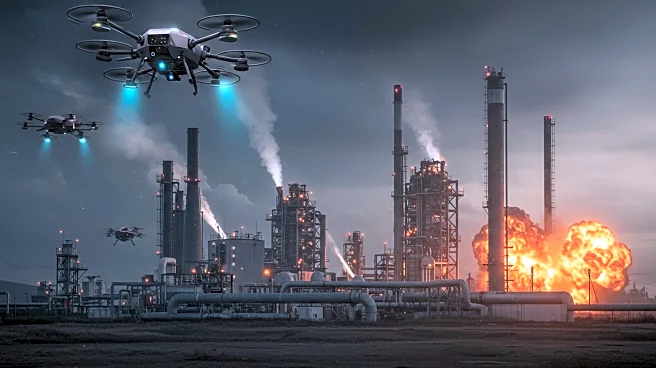What's Happening?
On August 11, Ukrainian Defense Intelligence (HUR) drones conducted a strike on the Orenburg Helium Plant in Russia, the sole facility in the country producing helium, a crucial element for missile manufacturing, space technology, and aviation. The plant, located in Orenburg Oblast near Kazakhstan, is approximately 1,200 kilometers from Ukraine's front line. The attack resulted in significant explosions, leading local authorities to close a section of the federal M-5 highway. The helium plant processes about 15 billion cubic meters of natural gas annually, and its products are integral to Russia's military operations, making it a strategic target under international law. This strike is part of Ukraine's broader strategy to disrupt Russia's military-industrial capabilities.
Why It's Important?
The attack on the Orenburg Helium Plant represents a significant blow to Russia's military-industrial complex, particularly affecting its missile production capabilities. Helium is essential for various military applications, including missile systems and aerospace technologies. By targeting this facility, Ukraine aims to weaken Russia's ability to sustain its military operations, potentially altering the dynamics of the ongoing conflict. The strike underscores the strategic use of drones by Ukraine to target deep-rear installations, aiming to disrupt supply chains and reduce Russia's offensive capabilities. This development could lead to increased tensions and further escalation in the region.
What's Next?
Following the strike, Russia may seek to bolster its defenses around critical infrastructure to prevent future attacks. Ukraine's continued use of drones to target key facilities suggests a sustained strategy to undermine Russian military capabilities. This could prompt Russia to retaliate with increased military actions or cyber operations against Ukrainian targets. Additionally, international stakeholders may respond by reassessing their support and strategies in the conflict, potentially influencing diplomatic efforts and military aid.
Beyond the Headlines
The use of drones in modern warfare highlights the evolving nature of military strategies, where technology plays a crucial role in gaining an asymmetric advantage. This development raises ethical and legal questions about targeting civilian infrastructure with military applications. The long-term implications could include shifts in international law regarding drone warfare and increased investment in drone technology by other nations.















